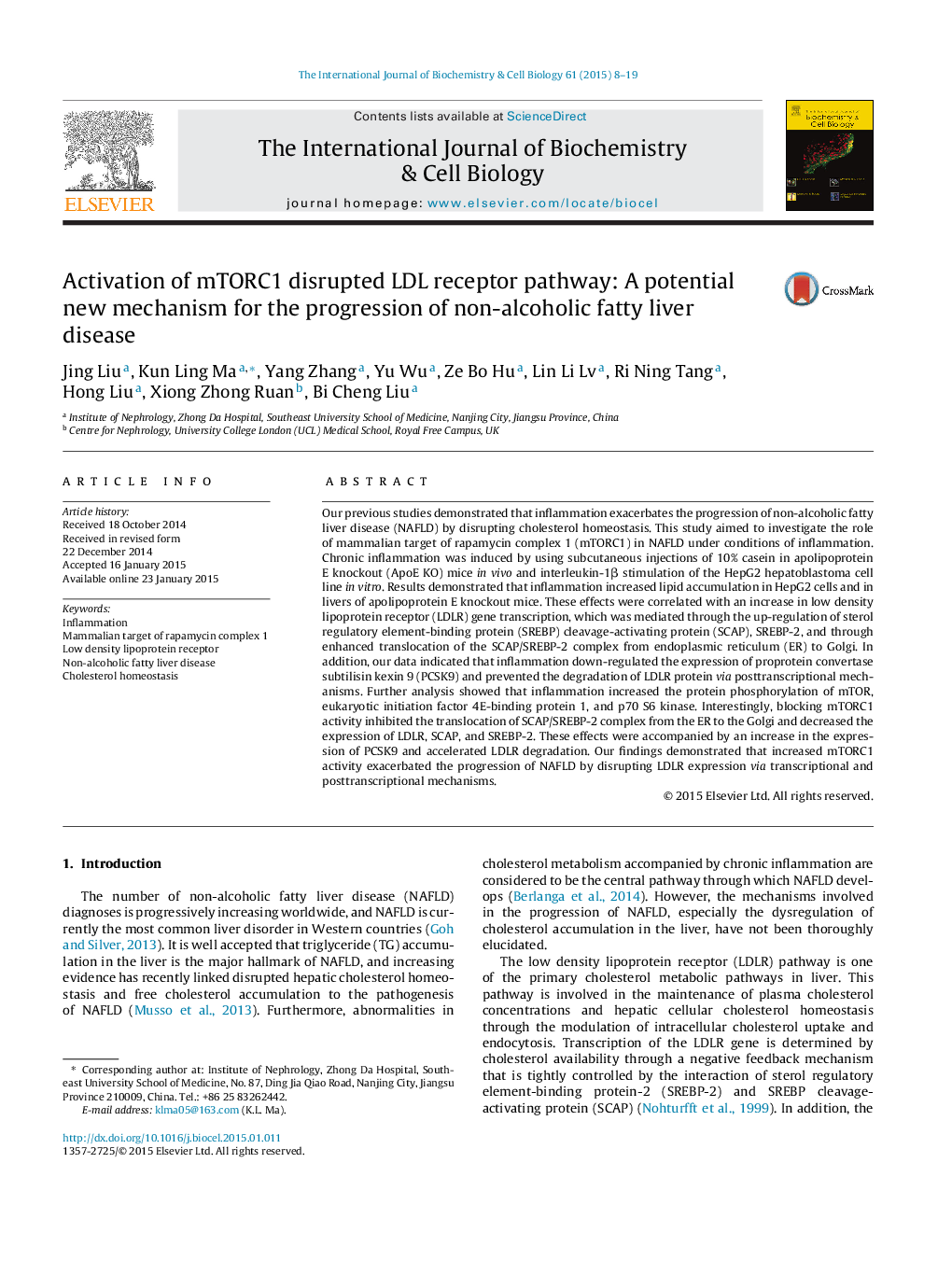| کد مقاله | کد نشریه | سال انتشار | مقاله انگلیسی | نسخه تمام متن |
|---|---|---|---|---|
| 1983420 | 1539883 | 2015 | 12 صفحه PDF | دانلود رایگان |

Our previous studies demonstrated that inflammation exacerbates the progression of non-alcoholic fatty liver disease (NAFLD) by disrupting cholesterol homeostasis. This study aimed to investigate the role of mammalian target of rapamycin complex 1 (mTORC1) in NAFLD under conditions of inflammation. Chronic inflammation was induced by using subcutaneous injections of 10% casein in apolipoprotein E knockout (ApoE KO) mice in vivo and interleukin-1β stimulation of the HepG2 hepatoblastoma cell line in vitro. Results demonstrated that inflammation increased lipid accumulation in HepG2 cells and in livers of apolipoprotein E knockout mice. These effects were correlated with an increase in low density lipoprotein receptor (LDLR) gene transcription, which was mediated through the up-regulation of sterol regulatory element-binding protein (SREBP) cleavage-activating protein (SCAP), SREBP-2, and through enhanced translocation of the SCAP/SREBP-2 complex from endoplasmic reticulum (ER) to Golgi. In addition, our data indicated that inflammation down-regulated the expression of proprotein convertase subtilisin kexin 9 (PCSK9) and prevented the degradation of LDLR protein via posttranscriptional mechanisms. Further analysis showed that inflammation increased the protein phosphorylation of mTOR, eukaryotic initiation factor 4E-binding protein 1, and p70 S6 kinase. Interestingly, blocking mTORC1 activity inhibited the translocation of SCAP/SREBP-2 complex from the ER to the Golgi and decreased the expression of LDLR, SCAP, and SREBP-2. These effects were accompanied by an increase in the expression of PCSK9 and accelerated LDLR degradation. Our findings demonstrated that increased mTORC1 activity exacerbated the progression of NAFLD by disrupting LDLR expression via transcriptional and posttranscriptional mechanisms.
Journal: The International Journal of Biochemistry & Cell Biology - Volume 61, April 2015, Pages 8–19